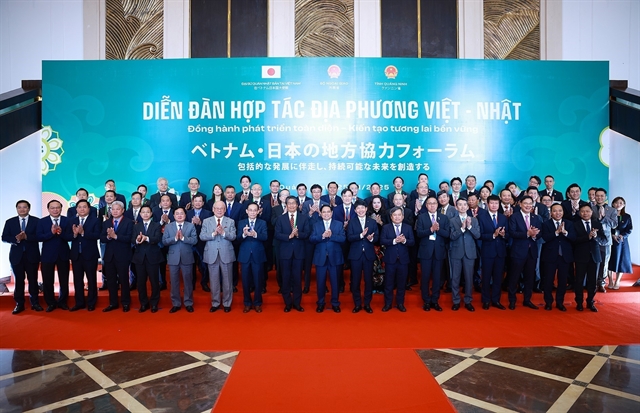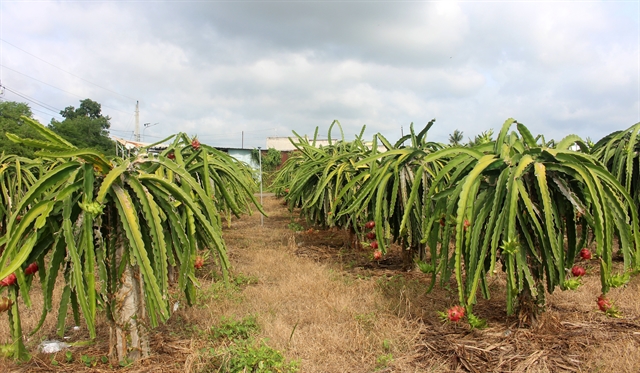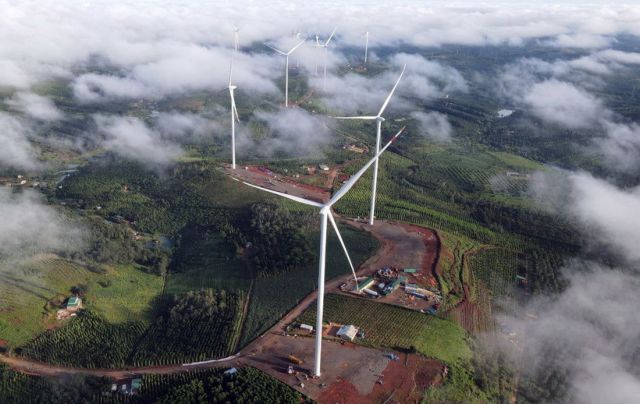 Society
Society


|
| A VietGAP-certified dragon fruit orchard in Lâm Đồng Province’s Bình Thuận Ward being harvested. – VNA/VNS Photo Hồng Hiếu |
LÂM ĐỒNG – Lâm Đồng Province is actively restructuring its dragon fruit farming for greater sustainability, focusing on appropriate zoning, stabilising cultivation areas, promoting safe farming methods, and diversifying processed products to expand market reach.
Despite being a key crop in the south-central province, in recent years the fruit has been adversely affected by price fluctuations, unstable markets, dependence on unofficial exports, and extreme weather.
These issues have gradually put off many farmers from growing it.
To improve its value and competitiveness, the province is encouraging production of dragon fruit in line with safety standards such as Vietnamese and global good agricultural practices (VietGAP and GlobalGAP).
According to the province Department of Agriculture and Environment, adopting VietGAP practices not only enhances product value and export potential but also improves working conditions, reduces excessive pesticide use, and strengthens the reputation of local produce.
The country’s largest dragon fruit producing province has 12 certified supply chains for safe farming, including nine for fresh produce with an annual output of about 90,600 tonnes, and three for processed goods totalling 165 tonnes.
More than 9,230ha, or around 35 per cent of the province’s dragon fruit area, meet VietGAP standards. Another 500ha are GlobalGAP-certified and 120ha are farmed organically.
The Hòa Lệ Clean Dragon Fruit Co-operative in Hàm Thuận Commune comprises 18 core members and 34 associated households.
They cultivate over 35ha of the fruit, including 10ha to GlobalGAP and the remainder to VietGAP standards.
The co-operative also forms production links with other groups and households to manage a total of 200ha.
Đỗ Thanh Hiệp, director of the co-operative, said: “By strictly following quality standards, our dragon fruit not only satisfies domestic demand but is also officially exported to high-standard markets like Japan, South Korea, the US, and the EU. This helps us get regular buyers, achieve higher prices and boost members’ incomes.”
The province targets getting VietGAP certification for 70–75 per cent of its dragon fruit growing areas by 2030.
To achieve this goal, the department is working with various agencies and local authorities to raise awareness and encourage growers to join co-operative groups and organisations producing to VietGAP standards.
With detailed zoning plans, farmers will receive guidance on scaling production appropriately, managing crops efficiently, and strengthening post-harvest linkages.
Processed products
As of last month, Lâm Đồng had around 26,000ha under dragon fruit, producing over 570,000 tonnes annually.
But only around 15 per cent of this is consumed domestically, while the rest is exported, mostly through border trade with China. Official exports account for just 2–3 per cent of the total volume.

|
| Dragon fruits are collected and sorted at a fruit trading establishment in Lâm Đồng Province before being distributed in the market. – VNA/VNS Photo Hồng Hiếu |
During the peak of the harvest season, when supply soars, the market often becomes saturated and farm gate prices drop to as low as VNĐ1,000–2,000 per kilogramme. At times traders even stop buying altogether.
To manage this situation, several co-operatives and businesses have begun processing fresh fruit into value-added products such as wines, jams, sweets, ice creams, instant noodles, and sauces.
The Bảo Long Bình Thuận Service Trade and Production Establishment in Hàm Thắng Ward is among the pioneers in this effort.
Trần Thị Kim Lĩnh, its owner, said: “Since 2019, after naturally fermenting dragon fruit juice, we’ve developed products like kombucha tea, syrup, jam, chewy sweets, jelly, and malt.”
Fresh fruit for these items must be clean, chemical-free and traceable, she added.
Developing deeply processed dragon fruit products is seen as a sustainable solution that reduces reliance on fresh-fruit sales, increases value, offers variety, and supports tourism.
However, most producers remain small, using outdated equipment, and making products that fall short of branding and market requirements.
According to the department, the province will attract major firms and investors into dragon fruit processing to broaden markets and enhance the fruit's competitiveness.
Local authorities will also encourage the adoption of modern technology, improved quality control, food safety assurance, and greater participation in trade promotion events, helping raise the profile of Lâm Đồng dragon fruit internationally. – VNS




